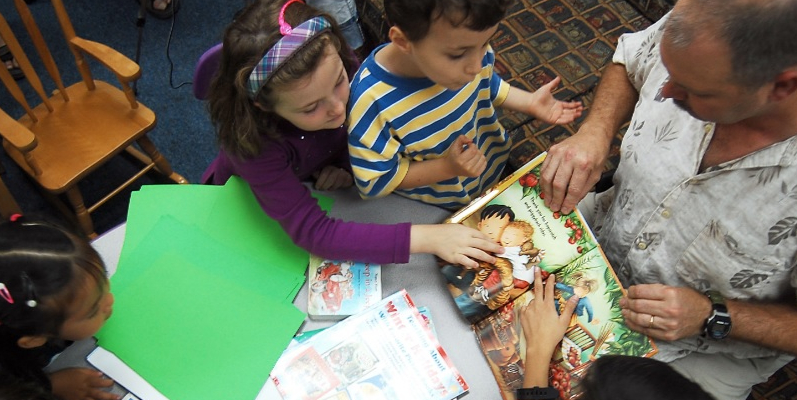I wrote here a few weeks ago about a poetry unit I was able to co-facilitate with a first year teacher. In that blog post I talked about how we approached teaching Mrs. B’s 3rd grade students to read and comprehend poetry.
Only a few short weeks have passed, but I can not stop thinking about the students and their enthusiastic response to the unit. Throughout my 30+ years in education I’ve come across so many teachers (and students) who seem to dread reading and writing poetry. I find it hard to empathize.
Why have I encountered so many who are afraid to enjoy the beauty of poetry?
And what can we do as educators to create a love of reading and writing poetry?
My Poetry Past
I can only speak for myself, but I think my love affair with poetry has to do with my life-long history with the genre. When I was a child my mother read an abundance of poetry to me. (I still remember the dreamy scenes illustrating my favorite childhood poem—Wynken, Blynken and Nod by Eugene Field.)
Nursery rhymes, classical poems written for children, and picture books written in verse were a part of the nighttime reading ritual I experienced as a child.
What sealed the deal, however, was the poetry introduced, studied and analyzed with much love and tenderness by my high school English teacher, Ms. Wright. She introduced me to one of my absolute favorite poems; The Children’s Hour by Longfellow.
Sharing the Love and Setting the Stage for Young Writers
How could Mrs. B and I avoid anything negative when our unit study of poetry turned from reading to then writing poetry?
Mrs. B and I had already watched the students spend days immersed in great poems. We determined the very best way to ease into writing poems would be to start with the simplest—list poems.
The first day of writing I started by showing the Sound of Music clip where Maria sings My Favorite Things. (I was surprised at how many of the kids had never seen the movie.) After viewing, we asked the students to list some of the “favorite things” they’d heard in the lyrics.
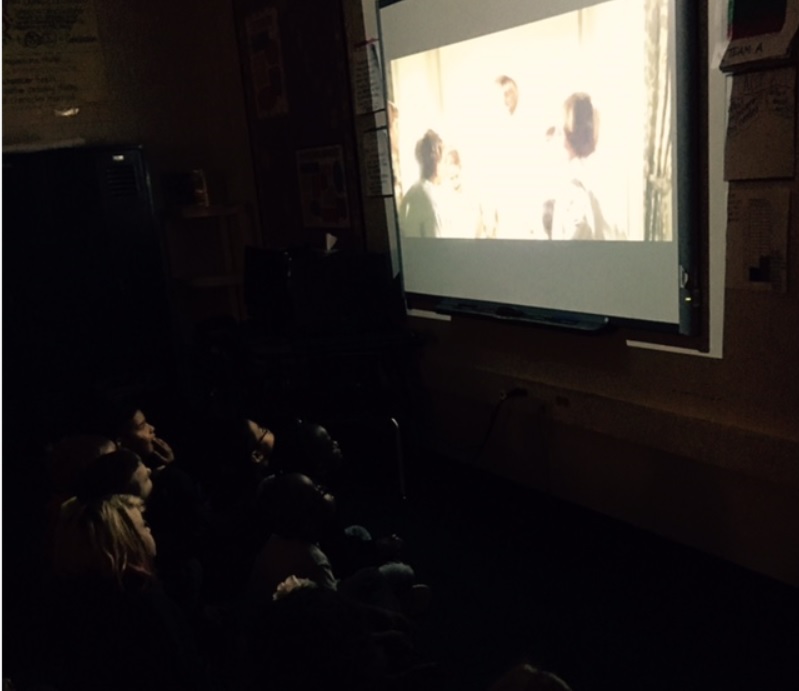
The lyrics from the song were then posted on the SmartBoard with this short introduction: “We’ve been studying poetry and so I’d like us to read these stanzas and then let’s talk about what you notice.” Only a few minutes passed and hands shot up all over the room. “It’s the words from the song!”
Exactly.
We spent the next 10 minutes with student pairs looking more closely. Then pairs shared with others at table groups, noticing and naming ideas about Hammerstein’s unforgettable lyrics. From there we shared more examples of list poems for the students to enjoy and “analyze” for writer’s craft.
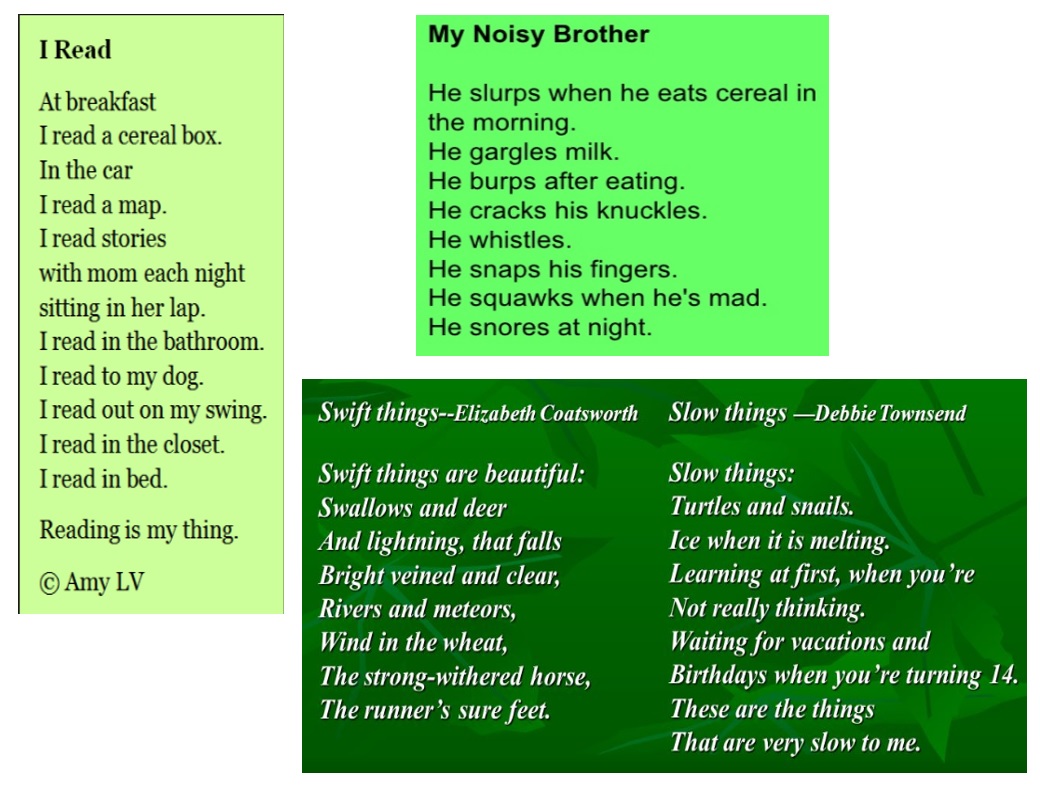
When we began to set up the writing time, I could sense a little trepidation from a handful of the students. I shared several drafts of a poem I wrote about my family. I explained that the idea for my list poem came from a wooden replica of a vintage flash card I have hanging in our home that represents how our family started from two (just my husband and me) and grew to the eleven members that now make up our little family. I showed them how I “copied” the technique I saw in a list poem that inspired me.
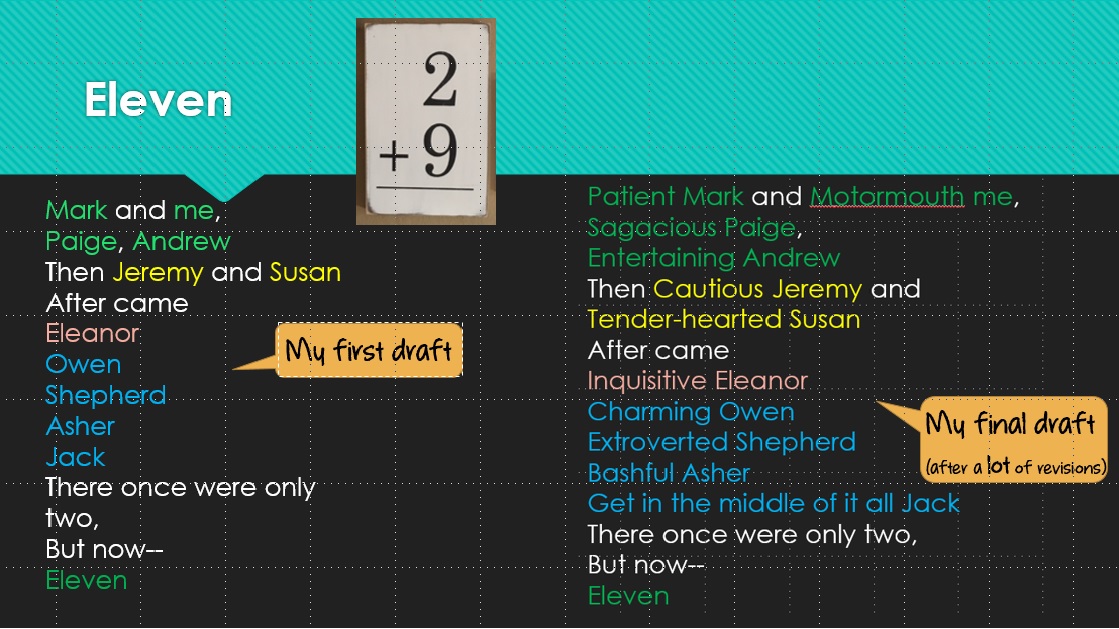
“This is one of those times when it’s OK to borrow from another writer. In fact, there’s a great strategy called ‘literary borrowing’ where you copy the form, rhythm or rhyme structure from another writer. Pay close attention to Mr. Hammerstein’s lyrics and how he arranged them or try to mimic the other poets’ work we’ve just read. You can do this. Now, off you go to try it for yourself. Mrs. B and I are here to help.”
Students spent the remainder of the writing workshop planning and drafting their own list poems. One of the most magical moments of the poetry unit for me was watching students pair up around the room to share their own poems, switch partners and share their original works again.
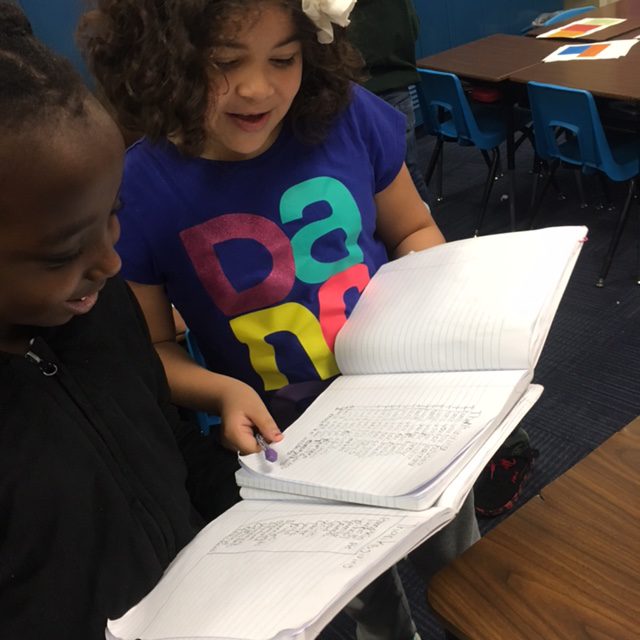
Five Tips for Leading Young Writers
If you’ve had the misfortune of experiencing poetry at any time in your life that left you with a bitter taste AND you find yourself in a position of teaching young readers and writers, please consider our advice.
Mrs. B and I humbly suggest these 5 fool-proof tips–
- Begin with a simple, engaging work of great poetry
- Ask students to notice and name and then provide an array of delightful examples for more noticing/naming
- Show your own attempts at writing original poems based on the model you’ve introduced
- Give time and support for students to try their own hand at “literary borrowing”
- Share (and celebrate) with an enthusiastic audience
One last tip. Try out some great classic (and contemporary) poems on your own. Read slowly and then read again.
Give yourself the gift of poetry so you can lovingly pass it on.








